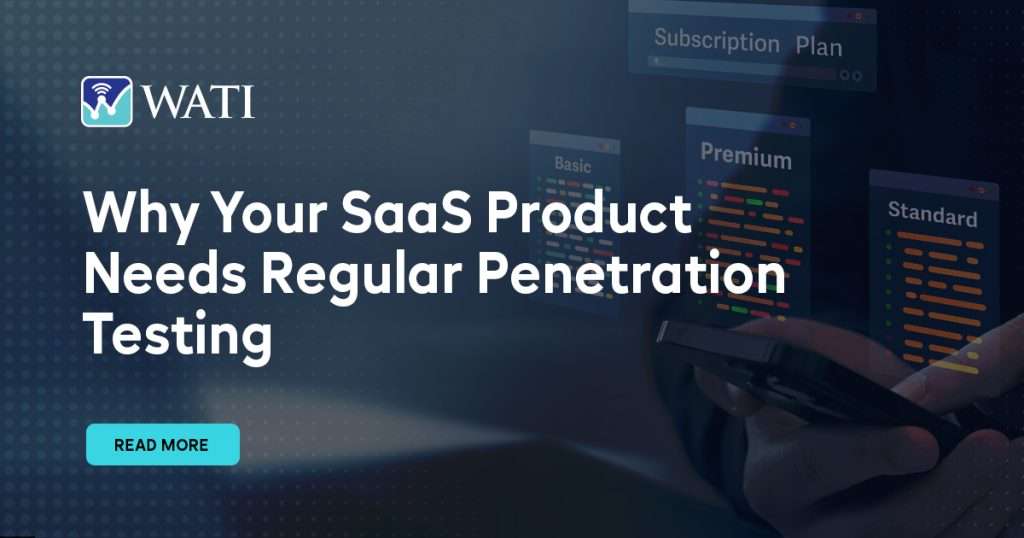As mobile applications become essential to businesses and user engagement, they also pose significant security risks. Vulnerability Assessment and Penetration Testing (VAPT) is a robust approach to identifying and mitigating security threats in mobile applications, providing an essential layer of security that protects data, safeguards user trust, and ensures regulatory compliance. This guide dives into how VAPT enhances mobile app security and why it’s crucial for business owners looking to secure their apps effectively.
What Is Mobile Application Security?
Mobile application security refers to the practices, processes, and technologies used to protect mobile apps from unauthorized access, data breaches, and cyberattacks. Given the sensitive data that many mobile applications handle—such as personal information, payment details, and location data—ensuring app security is essential. Effective mobile application security encompasses various techniques, including secure coding practices, data encryption, authentication protocols, and regular security assessments.
For business owners, mobile application security is a critical component of overall cybersecurity strategy. A secure app not only protects users but also strengthens brand trust, minimizes the risk of costly breaches, and helps the business comply with data protection regulations.
Why Mobile App Security Is Critical for Businesses
The surge in mobile app usage means that any security vulnerabilities can have far-reaching implications for businesses. A compromised mobile app can lead to data breaches, customer trust issues, and legal complications. Here’s why business owners should prioritize mobile app security:
Data Privacy Regulations: Compliance with regulations like GDPR, HIPAA, and CCPA is mandatory for businesses operating in regions where these regulations apply. Mobile VAPT helps ensure that your app adheres to these data protection standards.
Protecting User Trust: Consumers are increasingly aware of security risks. If your app is compromised, it could erode trust and impact your brand reputation.
Preventing Financial Losses: Cyberattacks on mobile apps often lead to direct and indirect financial costs, from ransom payments to lost revenue and mitigation expenses.
Key Security Threats in Mobile Applications
Before exploring how VAPT can address specific issues, it’s essential to understand the primary security threats that mobile applications face:
Data Leakage: Unintentional data exposure due to improper data storage, insecure communication channels, or lack of encryption.
Unsecure Code and API Vulnerabilities: Weak or vulnerable code and APIs can serve as entry points for attackers.
Insecure Authentication: Weak authentication methods, such as using simple passwords, increase the risk of unauthorized access.
Malware Injections: Malicious code injected into the app’s codebase or during updates can compromise the application and its data.
By targeting these vulnerabilities through VAPT, you can build a solid defense against cyber threats that are most relevant to mobile applications.
How VAPT Works in Mobile Application Security
VAPT for mobile applications includes a sequence of steps tailored to address the unique structure and functions of mobile apps. Here’s a breakdown of the process:
Planning and Scoping: Defines objectives and the scope of testing based on the app’s functionality, the industry’s regulatory requirements, and business needs.
Vulnerability Assessment: Detects potential security issues, such as insecure data storage, unprotected communication channels, and insufficient authentication mechanisms.
Penetration Testing: Simulates actual attacks to evaluate how vulnerabilities could be exploited by hackers. This includes testing the app’s response to various attack vectors like man-in-the-middle (MITM) attacks, SQL injection, and cross-site scripting (XSS).
Remediation and Reporting: Provides a detailed report on the vulnerabilities discovered, the impact of each vulnerability, and recommendations for remediation.
The combination of these steps ensures a comprehensive evaluation of your mobile app’s security and an actionable path toward mitigating risks.
Benefits of VAPT for Mobile App Security
VAPT offers significant benefits that go beyond just identifying vulnerabilities. Here’s why every business owner should consider VAPT as a part of their mobile app security strategy:
Identifies Security Gaps Early: By detecting vulnerabilities early, VAPT prevents minor flaws from escalating into major security issues.
Improves App Resilience: Regular VAPT assessments strengthen the mobile app’s resilience to attacks, which is crucial in a world where new threats emerge daily.
Ensures Compliance: For businesses that handle sensitive data, VAPT is essential to ensure regulatory compliance and avoid legal complications.
Protects Brand Reputation: A secure mobile app demonstrates a commitment to user security, fostering trust and brand loyalty.
VAPT Tools and Techniques for Mobile App Security
There are various tools and techniques for performing VAPT on mobile applications, each providing unique insights into potential vulnerabilities. Here’s a look at some popular VAPT tools and their benefits for mobile app security:
OWASP ZAP (Zed Attack Proxy): An open-source tool widely used for identifying security risks, particularly effective in testing web applications and APIs used in mobile apps.
Burp Suite: Known for its advanced penetration testing capabilities, Burp Suite provides a comprehensive toolkit for web and mobile application security testing.
Mobile Security Framework (MobSF): A powerful automated tool designed specifically for mobile application security testing, MobSF can help identify vulnerabilities across Android and iOS applications.
AppSweep: Focuses on scanning and identifying vulnerabilities in mobile apps, making it an excellent choice for Android application testing.
By leveraging these tools in combination with manual testing, cybersecurity teams can ensure that every part of the mobile app is secure.
Integrating VAPT into the App Development Lifecycle
For maximum effectiveness, VAPT should be integrated into your mobile app’s development lifecycle rather than treated as a one-time activity. Here’s how to incorporate VAPT at different stages:
During Development: Regular vulnerability assessments during the coding phase help identify and fix flaws before they reach production.
Pre-Launch: Conduct a comprehensive VAPT before the app is launched. This final round of testing ensures that any remaining vulnerabilities are addressed before users begin using the app.
Post-Launch and Routine Testing: Once the app is live, routine VAPT helps detect new vulnerabilities that emerge from app updates, third-party integrations, or newly discovered security threats.
Choosing the Right VAPT Provider for Mobile App Security
When selecting a cybersecurity provider for mobile VAPT services, consider the following factors to ensure you get the best protection for your mobile app:
Experience in Mobile App Security: Ensure the provider has expertise in securing mobile applications, as mobile security has unique challenges compared to traditional web applications.
Use of Comprehensive Testing Tools: The provider should use a range of tools and techniques, including both automated and manual testing methods, to thoroughly assess the app’s security.
Regulatory Knowledge: If your business operates in a regulated industry, choose a provider who understands the specific compliance requirements for your app.
A trustworthy VAPT provider will offer a clear and detailed plan, keeping you informed throughout the assessment process and providing actionable recommendations for securing your mobile application.
Best Practices for Business Owners to Secure Mobile Applications
In addition to VAPT, business owners should follow best practices to maintain mobile app security over time. Here are key recommendations:
Educate Development Teams on Secure Coding Practices: Prevent vulnerabilities by training developers in secure coding techniques and ensuring they stay updated on the latest security protocols.
Implement Secure Data Storage and Transmission: Use encryption for data storage and transmission to minimize the risk of data breaches.
Use Multi-Factor Authentication (MFA): MFA adds an extra layer of protection for users, reducing the risk of unauthorized access.
Regularly Update the App: Apply security patches and updates regularly to keep up with evolving security threats.
Conclusion: Safeguarding Your Mobile App with VAPT
In the face of rising mobile security threats, Vulnerability Assessment and Penetration Testing (VAPT) is an essential tool for business owners looking to protect their mobile applications and their users. By adopting VAPT as part of your security strategy, you gain insight into vulnerabilities and a path toward creating a resilient and secure mobile app. Whether you’re launching a new mobile app or looking to secure an existing one, investing in VAPT will help safeguard your brand, maintain user trust, and ensure compliance with regulatory standards.
Incorporating regular VAPT services into your mobile application’s security strategy is an investment that pays off by preventing data breaches, avoiding legal repercussions, and preserving customer trust. For business owners navigating the digital age, proactive mobile app security is no longer optional it’s essential.
Frequently Asked Questions (FAQs)
VAPT (Vulnerability Assessment and Penetration Testing) for mobile apps combines automated scanning with manual ethical hacking to uncover security flaws before they’re exploited. Business owners should care because it proactively protects user data, enhances app resilience, and mitigates legal and financial risks. Choose a VAPT provider experienced in mobile-specific testing to ensure your app’s unique vulnerabilities—like reverse engineering or insecure storage—are addressed.
VAPT evaluates how data is stored and transmitted— including encryption, local storage, APIs, and insecure endpoints. This prevents leakage of login credentials, financial data, or personal identifiers. Look for VAPT providers that use tools like Burp Suite, MobSF, and manual testing techniques to ensure comprehensive coverage of data confidentiality.
Typical vulnerabilities include insecure data storage, weak authentication, API flaws, code obfuscation failures, and susceptibility to man-in-the-middle (MitM) attacks. VAPT goes deeper by simulating jailbreak or emulator-based attacks, spoofing, and injection attacks. Pick a provider who combines automated tools with expert manual testing for in-depth vulnerability discovery.
Yes. Mobile VAPT demonstrates a proactive security posture aligned with regulations like GDPR, HIPAA, PCI DSS, and CCPA. A detailed VAPT report supports audit readiness and documentation. When choosing a provider, ensure they understand regulatory frameworks relevant to your industry so their testing aligns with compliance standards.
You should perform VAPT during planning, pre-launch, and ongoing post-launch phases—especially after major updates or third-party integrations. Continuous integration (CI/CD) pipelines benefit from regular testing. Choose a provider that supports CI/CD integration and offers periodic retesting, not just a one-time assessment.
VAPT benefits include improved app performance, stronger brand reputation, increased user trust, and cost savings by preventing breaches upfront. It also provides actionable remediation guidance prioritized by risk severity. Select a provider who offers not just reports, but also hands-on remediation support and clear documentation for developers.
No. Automated tools like MobSF can scan for known issues, but sophisticated logic flaws, chained exploits, or device-specific vulnerabilities often require expert manual testing. The best providers use both automated and manual techniques, ensuring that edge-case weaknesses aren’t missed.
Assess providers based on their experience with both iOS and Android testing, familiarity with tools like MobSF and Burp Suite, industry certifications (OSCP, CEH), data compliance knowledge, and customer references. Ask for sample reports to evaluate depth of analysis and clarity of remediation advice.
When conducted properly, VAPT is non-disruptive—tests are run in controlled environments or offpeak hours. Any testing that could affect production is pre-agreed via rules of engagement. Choose a VAPT provider that follows strict testing protocols and ensures minimal business impact.
Mobile apps should undergo VAPT at least once a year, and especially after new feature releases or backend changes. Providers should offer retesting after fixes, integration into CI/CD processes for ongoing monitoring, and tailored testing plans based on your app’s complexity and risk profile.



